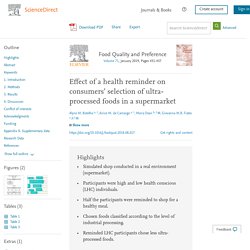

Livraison de repas à domicile : malgré les succès commerciaux, les investisseurs restent sceptiques. À la faveur des confinements, la croissance mondiale du secteur de la livraison de repas à domicile a encore accéléré.

En France, la livraison à domicile pourrait représenter, en 2024, 19 % du chiffre d’affaires de la restauration commerciale contre 6 % en 2019 et peser près de 10,3 milliards d’euros. Selon Food Service Vision, 7 livraisons sur 10 sont dès aujourd’hui le fait de plates-formes de livraison. Au Royaume-Uni, où la même tendance s’observe, la plate-forme Deliveroo a été introduite en bourse à Londres le 31 mars, mais cette opération s’est avérée très décevante. L’action avait pourtant été introduite au bas de la fourchette pressentie à 3,9 livres sterling (4,5 euros) par action, mais ne cesse de dégringoler depuis.
Au 12 avril, son cours n’était plus que de 2,5 livres sterling (2,9 euros). Un modèle d’affaires en question Quelles que soient les entreprises retenues, leur croissance est très rapide. Cette absence de marges peut s’expliquer par plusieurs facteurs convergents. Ateliers « cuisine » au collège : la clé pour apprendre à mieux consommer ? À l’heure où l’obésité est un vrai problème de santé publique et où le marketing agro-alimentaire promeut une consommation rapide et facile, à base de plats tout prêts et de produits ultra-transformés, il est crucial d’inciter les jeunes à adopter de bonnes habitudes alimentaires.

Répétés à l’école ou lors de campagnes d’information, les messages du Programme national nutrition santé (PNNS) leur donne quelques points de repère. Food Preferences in Finland: Sustainable Diets and their Differences between Groups. Portion size and appetite control: Nutrition Bulletin. Insect Consumption Attitudes among Vegans, Non-Vegan Vegetarians, and Omnivores. Abstract: Background: Consumption of foods of insect origin is encouraged, since insect consumption is seen as one of the responses to the environmental impact of meat production.

This study examines the attitude (A), subjective norm (SN), perceived behavioral control (PC), and food neophobia (FN) toward the consumption of foods of insect origin, as well as the conditions for eating insect-based foods among vegans, vegetarians, and omnivores. Methods: The data was obtained by using an online survey and convenience sampling (n = 567, of whom omnivores represented 74%, vegans 5%, and non-vegan vegetarians 22%). Results: The three dietary groups exhibited significantly different intention (I) to eat foods of insect origin. Vegans held the most rigid negative attitude (A), and their subjective norm (SN) to eat insects was weaker compared to that of omnivores (p < 0.001) and non-vegan vegetarians (p < 0.001). Y a-t-il trop de choix dans les supermarchés ? Dans une chronique de La tête dans le cerveau diffusée fin janvier 2019 et reprise par The Conversation, C.

Rodo présente les résultats d'une étude récente s'intéressant à l'activité cérébrale et au ressenti de personnes (questionnaires) ayant dû choisir une photo de paysage parmi 6, 12 ou 24 propositions, la-dite photo étant ensuite imprimée sur un T. shirt ou un mug. Il apparaît que les 12 options correspondent à un optimum pour le choix, avec une diversité suffisante sans être trop lourde à prendre en charge. L’éprouvant choix du supermarché (chronique 87) Placé face à un choix, il semblerait qu’avoir peu d’option ne soit pas idéal, mais en avoir trop ne serait pas bon pour autant.

Que se passe-t-il dans le cerveau en fonction du nombre d’option possible face à un choix ? A low-cost Behavioural Nudge and choice architecture intervention targeting school lunches increases childrenâs consumption of fruit: a cluster randomised trial. This study is the first to present a controlled evaluation of a behavioural nudge intervention designed to increase fruit and vegetable consumption of primary-age children in UK school cafeterias.

Effect of a health reminder on consumers’ selection of ultra-processed foods in a supermarket. 1.

Introduction Increased consumption of processed foods rich in fat, salt and sugar is a contributing factor to the high worldwide prevalence of overweight and obesity (Swinburn et al., 2011, WHO, 2018). Consumption of ultra-processed foods has increased exponentially over the last decades in high-income countries and in Brazil as well (Conde and Monteiro, 2014, Monteiro et al., 2013). Consequently, a new version of the Dietary Guidelines for the Brazilian Population was published, instructing individuals to limit the consumption of processed foods, avoid consumption of ultra-processed foods, and choose fresh and minimally processed foods as the core of their diets (Brazil, 2015). A number of countries in Europe and Latin America, and the USA now adopt categorization systems by level of industrial processing (Moubarac, Parra, Cannon, & Monteiro, 2014). 2.
No choice vs free choice: How serving situations influence pre-school children’s vegetable intake. Using insights from behavioral economics to nudge individuals towards healthier choices when eating out: A restaurant experiment. Americans would rather exercise than eat healthy. Dive Brief: New research from Mintel found that U.S. consumers prefer exercising (48%) to eating healthy (31%).

Most consumers are also unlikely to change their diet to stay healthy, with just a fifth responding they would avoid sugar and 12% saying they would eat a low-calorie diet or limit their meat intake.Cost was also a factor for people who chose working out rather than improving their eating. The research found that consumers are almost seven times more apt to say that it's expensive to eat healthy food (34%) than to agree it’s costly to work out (5%). " Impact of a nudging intervention and factors associated with vegetable dish choice among European adolescents. Éducation nutritionnelle et acculturation scientifique : quelles circulations de normes et de savoirs dans les discours adressés aux jeunes ? 1Dans le cadre de l’École comme dans celui des éducations non formelles, les « Éducations à » se développent au point de prendre une place de plus en plus grande dans la formation et l’éducation scientifiques.

Il ne s’agit plus seulement de faire que les élèves s’approprient des savoirs scientifiques, il faut les conduire à devenir des citoyens éclairés, capables de prendre en charge des problèmes complexes et de faire des choix d’actions. Or ces problèmes, soit font l’objet de débats au sein de la communauté scientifique, car les chercheurs ne partagent pas exactement les mêmes références, soit relèvent d’études de corrélations sans ressortir de problèmes explicatifs. Étiquetage des aliments: plus de légumes et moins de calories dans l’assiette. Nouvelle étude.

Breaking the fast: Meal patterns and beliefs about healthy eating style are associated with adherence to intermittent fasting diets. JavaScript is disabled on your browser. Please enable JavaScript to use all the features on this page. Abstract Many believe that eating three meals each day is healthy and that skipping meals can be detrimental. What remains unclear is whether this belief undermines attempts to restrict energy intake by skipping meals. In an online survey, participants (N = 312) with experience of intermittent fasting (IF) reported their beliefs about healthy meal and snack frequency, as well as their non-fasting-dasy and fasting-day eating patterns. Children's healthy and unhealthy beverage availability, purchase and consumption: A wearable camera study. Children's sugar-sweetened beverages (SSBs) consumption presents significant risks for obesity, type 2 diabetes and dental health. But there is a lack of objective data on beverages in children's overall environments.
This study aimed to determine the nature and extent of children's beverage availability, purchase and consumption, throughout their day, using wearable cameras for data collection. Data were sourced from ‘Kids’Cam NZ′, a study in which randomly-selected New Zealand children (n = 168; 11-14y, mean 12.6y) wore cameras for four days (Thursday-Sunday), automatically taking a photo every 7s.
Using content analysis, Thursday and Saturday images (n = 700,201) were systematically analysed. On average, 18.9 (95% CI 16.8, 21.4) drinks/day were available to the children (n = 158), of which 7.5 (95% CI 5.8, 9.7; 39.7%) were non-core drinks, including 6.4 (95% CI 5.0, 8.3; 33.9%) SSBs. What factors influence ultra-processed food purchases and consumption in households with children? A comparison between participants and non-participants in the Supplemental Nutrition Assistance Program (SNAP)
“If I became a vegan, my family and friends would hate me:” Anticipating vegan stigma as a barrier to plant-based diets. Effects of health star labelling on the healthiness of adults' fast food meal selections: An experimental study. Breakfast eating patterns and drivers of a healthy breakfast composition. JavaScript is disabled on your browser. Please enable JavaScript to use all the features on this page. Abstract Breakfast has long been described as the most important meal of the day.
While breakfast habits and their consequences on children's health and performance are well documented, studies on the adult population are lacking. Dealing with the meat paradox: Threat leads to moral disengagement from meat consumption. JavaScript is disabled on your browser. Please enable JavaScript to use all the features on this page. Abstract Meat consumption is conflicted, because meat provides pleasure to many people, but it also causes animals to suffer. This so-called meat paradox elicits discomfort in meat-eaters and they try to reduce their discomfort, for example, by means of moral disengagement.
Traffic light labelling of meals to promote sustainable consumption and healthy eating. How consumers of meat-based and plant-based diets attend to scientific and commercial information sources: Eating motives, the need for cognition and ability to evaluate information. Andersen et al., 2002 L.F. Andersen, L. Adult Eating and Health Patterns: Evidence From the 2014-16 Eating & Health Module of the American Time Use Survey. By Eliana Zeballos and Brandon Restrepo With data from the 2014-16 Eating & Health Module (EHM) of the American Time Use Survey (ATUS), this report presents national statistics on eating and health patterns for the U.S. adult population as a whole and for a wide variety of important demographic subgroups.
It also examines whether and how certain behaviors have changed over time, using data from the 2006-08 EHM. Keywords: eating patterns, diet, health, food-related activities, time allocation, American Time Use Survey, ATUS, Eating and Health Module, EHM, primary eating, secondary eating, grocery shopping, meal preparation, time use, food assistance, nutrition assistance, body mass index, obesity, primary activity, secondary activity In this publication...
Why people in rich countries are eating more vegan food - The retreat from meat. IT IS lunchtime and a queue is forming for the burgers at Krowarzywa, voted the city’s best in an online poll: students, families, businessmen in suits. This is Warsaw, where (you might think) lunch is usually a slab of meat with a side order of sausage. But at Krowarzywa—which means “cow alive” and contains the word warzywa, meaning vegetables—no animals were harmed in the making of the food. The burgers are made of millet, tofu or chickpeas. Effectiveness of sustainability labels in guiding food choices: Analysis of visibility and understanding among young adults. 1. Introduction The growing concern of society for the social and environmental consequences of food production and consumption, as well as greater awareness of the unintended negative impacts of individual food choices on global food sustainability, has led to a greater need for information on the impacts of food that we consume daily.
At the same time, the increasing demand for sustainable food products has driven manufacturers to adopt a larger number of sustainability food claims, certifications, messages and other information tools to differentiate their goods. Motivations and Constraints of Meat Avoidance. Moving location of fruit and vegetables can lead to 15 percent sales increase: Research suggests a simple 'nudge' can lead to healthier diets for young adults. Rootes Grocery StoreSimply moving where fresh fruit and vegetables are placed in a shop can increase their sales, new research by Warwick Medical School/the University of Warwick, published by BMC Public Health, has found. Women’s employment and the decline of home cooking: Evidence from France, 1985–2010. Impact of warning labels on sugar-sweetened beverages on parental selection: An online experimental study.
Adams et al., 2014 J.M. Adams, W. Hart, L. Gilmer, E.E. Lloyd-Richardson, K.A. Appetite, 83 (2014), pp. 10-18 Ares et al., 2018. ‘Buying Salad Is a Lot More Expensive than Going to McDonalds’: Young Adults’ Views about What Influences Their Food Choices. Food as Ideology: Measurement and Validation of Locavorism. Déterminants sensoriels et cognitifs des préférences et des choix alimentaires des enfants. Measuring food preferences through experimental auctions: A review. Exploring the understanding of the term “ultra-processed foods” by young consumers. 1. Introduction The food industry is increasingly motivated to develop strategies to encourage consumers to eat more, enlarge their portions and frequently consume processed, commodity-derived products, such as sweets, soft drinks, snacks, and fast food (Global Panel on Agriculture and Food Systems for Nutrition, 2016; Ludwig & Nestle, 2008; Monteiro & Cannon, 2012; Monteiro, Cannon, Moubarac, et al., 2017).
Nowadays, a dominant global food industry has emerged. The food of high-income countries (US, Canada, the UK, Australia, etc) has become dominated by packaged, ready-to-eat products. Barriers and facilitators towards adopting a more plant-based diet in a sample of Danish consumers. Online grocery sales more than tripled in past five years, expected to quadruple in next five. Americans spend less time eating than they did 10 years ago, USDA report shows. Balanced days vs balanced meals: The new way to diet? Researchers, nutritionists and other health professionals came together to discuss Chrono-nutrition: circadian clocks, mealtimes and metabolic disorders at the Royal Society of Medicine, in London, earlier this month (November 12th).
Dr Alexandra Johnstone, personal chair at the Rowett Insititue at the University of Aberdeen, asked whether every calorie should be treated the same, pointing out that there is much more to losing weight than simply reducing calorie intake. She argued that research has shown that often people need to reverse their daily calorie intake in order to lose weight. Consumers prefer and prioritize cooking at home, Peapod finds. More than three-quarters (77%) of the 1,003 adults (501 mean and 502 women, aged 18 and older) surveyed said they would rather eat a homemade meal than go out for dinner, with 59% of millennial-aged respondents prioritizing cooling more meals at home next year. Leveraging restaurant menus to combat obesity. Pourquoi le temps passé à cuisiner décroît-il ? - PSE-Ecole d'économie de Paris. Is Cooking Still a Part of Our Eating Practices? Analysing the Decline of a Practice with Time-Use Surveys - Marie Plessz, Fabrice Étilé, 2018.
Millenials et Alimentation 2018. On the Measurement of Consumer Preferences and Food Choice Behavior: The Relation Between Visual Attention and Choices. Impact of sustainability perception on consumption of organic meat and meat substitutes. Consommation : Les Français bien décidés à poursuivre leur transition alimentaire. Meet the foodies who are changing the way Americans eat. Grocery store interventions to change food purchasing behaviors: a systematic review of randomized controlled trials. Relationship between pro-environmental attitudes and behaviour and dietary intake patterns. Consumer Readiness to Reduce Meat Consumption for the Purpose of Environmental Sustainability: Insights from Norway. Can front-of-pack labels influence portion size judgements for unhealthy foods?
‘Buying Salad Is a Lot More Expensive than Going to McDonalds’: Young Adults’ Views about What Influences Their Food Choices. Thirteen-Year Trends in Dietary Patterns among Japanese Adults in the National Health and Nutrition Survey 2003–2015: Continuous Westernization of the Japanese Diet. Influence of the nutrition and health information presented on food labels on portion size consumed: a systematic review. Factors perceived to influence healthy eating: a systematic review and meta-ethnographic synthesis of the literature. Breakfast in Denmark. Prevalence of Consumption, Intake of Foods, Nutrients and Dietary Quality. A Study from the International Breakfast Research Initiative. Unsustainable, unhealthy, or disgusting? Comparing different persuasive messages against meat consumption.
Behavioural Insights and (Un)healthy Dietary Choices: a Review of Current Evidence. Social desirability and sustainable food research: A systematic literature review. Do labels that convey minimal, redundant, or no information affect consumer perceptions and willingness to pay? Nutrient sensing: What can we learn from different tastes about the nutrient contents in today’s foods? Promoting healthy drink choices at school by means of assortment changes and traffic light coding: A field study. Study flags generation gap in attitudes to ‘fair food’ Veganism still growing despite dissatisfaction with food options. More Americans are turning down restaurants in favor of their own kitchens. Végétarisme : entre bonheur et "dissonance cognitive"
Review og grocery store interventions. Impact of private mabels and information campaigns on organic and fair trade food demand. Numéro spécial Comportement alimentaire. Patterns and predictors of food texture introduction in French children aged 4–36 months. Doggy bags and downsizing: Packaging uneaten food to go after a meal attenuates the portion size effect in women. Personality and meat consumption: The importance of differentiating between type of meat. Experimental scarcity increases the relative reinforcing value of food in food insecure adults.
Measuring the meat paradox: How ambivalence towards meat influences moral disengagement. Taste at first (person) sight: Visual perspective modulates brain activity implicitly associated with viewing unhealthy but not healthy foods. The persuasive effect of advergames promoting unhealthy foods among children: A meta-analysis. Evolutionary considerations on social status, eating behavior, and obesity. Changing attitudes towards healthy food via self-association or nutritional information: What works best? Cutting through conflicting prescriptions: How guidelines inform “healthy and sustainable” diets in Switzerland. Can information affect sensory perceptions? Evidence from a survey on Italian organic food consumers. Err 247. Shopping and cooking: the organization of food practices, at the crossing of access to food stores and household properties in France. What Is the Evidence for “Food Addiction?” A Systematic Review. The Influence of Place of Residence, Gender and Age Influence on Food Group Choices in the Spanish Population: Findings from the ANIBES Study.
The Impact of Nutrition and Health Claims on Consumer Perceptions and Portion Size Selection: Results from a Nationally Representative Survey. ‘Obesogenic’ School Food Environments? An Urban Case Study in The Netherlands. Jeunes enfants_textures. Greenpeace Les Français et les repas végétariens dans les cantines Pour diffusion. If it’s healthy, it’s tasty and expensive: Effects of nutritional labels on price and taste expectations. Healthy food is nutritious, but organic food is healthy because it is pure: The negotiation of healthy food choices by Danish consumers of organic food. Exploring the correlation between self-reported preferences and actual purchases of nutrition labeled products. Sugar, salt or sweeteners may be key to getting children to eating greens. Teenage dream: Young consumers spend 1,000 hours thinking about food. Restaurant menu design affects vegetarian food choice.
Individual characteristics associated with changes in the contribution of plant foods to dietary intake in a French prospective cohort. Adherence to the French Eating Model is inversely associated with overweight and obesity: results from a large sample of French adults. Effects of the National Bioengineered Food Disclosure Standard: Willingness To Pay for Labels that Communicate the Presence or Absence of Genetic Modification. Foods with increased protein content: A qualitative study on European consumer preferences and perceptions.